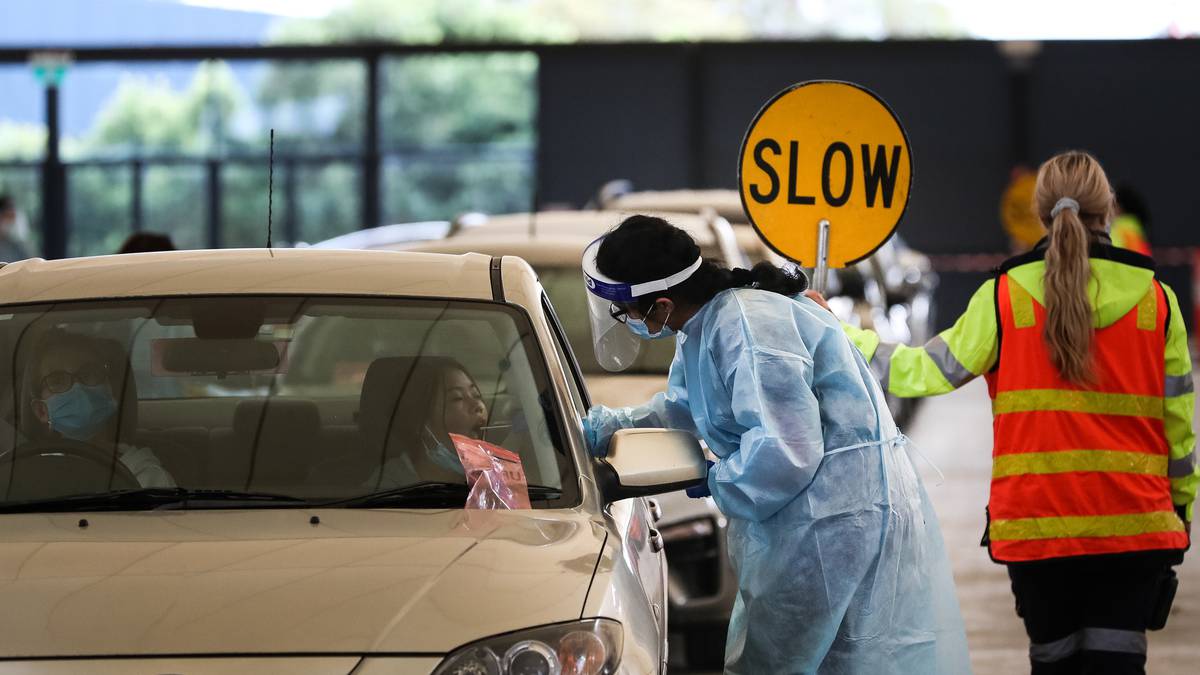Victoria has recorded five new locally acquired Covid-19 cases overnight, bringing the Melbourne cluster to 35.
It comes after the state confirmed four new cases on Thursday, down from the 11 new infections confirmed on Wednesday.
Despite the low case numbers, an epidemiologist has told residents to expect an “uptick” in the coming days.
Epidemiologist and World Health Organisation (WHO) adviser, Professor Mary-Louise McLaws, said “it does take a bit longer” to understand how many of the now 15,000 known contacts have contracted the virus.
“But I expect an uptick. In Northern Beaches when there was an outbreak it took six days to get to 30. Then it continues because of a very close-knit community,” she told ABC’s Weekend Breakfast.
“The same thing happens in Melbourne. It’s a very close-knit community. It’s a city that’s easy to get around and sadly it is easy to spread. It’s the city of most concern in Australia for explosions of cases.”
NZ paused quarantine-free travel with Victoria until Friday, June 4 after the Melbourne lockdown was announced and emailed around 5000 people who had travelled from Melbourne between May 20 and May 25 to instruct them to get tested for Covid and self-isolate until they received a negative result.
McLaws warned there was also the possibility Victoria’s seven-day lockdown could be extended depending on how many cases emerge over the coming days.
She said the seven-day lockdown covers one incubation period, and towards the end of the lockdown they may decide they need to extend it for another seven days.
“In outbreak management it’s normally two average incubation periods to get to zero and a really good idea of what is going on,” McLaws said.
“A seven-day lockdown probably would’ve been OK, had it been fewer cases.”
Under the seven-day “circuit breaker” lockdown, residents are only allowed to leave their homes for five reasons, including getting food and supplies, authorised work, care and caregiving, exercise for up to two hours each day with one other person, and getting vaccinated.
A raft of restrictions around masks, gatherings, venues and businesses were also introduced and will be in force until 11.59pm on June 3.
Victoria warned 'it's not over yet'
While Friday’s case numbers came as welcome news to Victorians, the state’s chief health officer Professor Brett Sutton said they weren’t out of the danger zone yet.
“It is not over yet. We can get 10 tomorrow, 20 tomorrow – we absolutely have to recognise that there are thousands and thousands of close contacts still to go through the incubation period, who could become symptomatic,” he said on Friday.
Sutton previously said anyone of the 15,000 contacts they have identified could become cases over the next 14 days.
He also revealed the man known as case 5, believed to be the first case in the Whittlesea cluster, may have been out in the community for up to 12 days while infectious.
This is a major concern considering how quickly this virus has spread across Victoria in just a few days.
All of the cases in this cluster have been identified as the B.1.617 variant, commonly known as the Indian strain of the virus.
This strain is considered highly infectious and has been officially listed as a “variant of concern” by the WHO.
On Thursday, Victoria’s Acting Premier James Merlino said that state has never experienced an outbreak of a strain that spreads this easily, saying the time between catching the virus and passing it on “is tighter than ever”.
“Our contact tracers are identifying and locking down the first ring, second ring, and third ring within 24 hours. They have never done that before,” he said.
“That’s the fastest our contact tracers have ever moved within a 24-hour period, identifying and locking down first, second, and third rings of cases. But despite working as fast as this, and my thanks to all of our contact tracers, this variant is moving faster still.”
More than 150 exposure sites across Victoria
It comes as the state’s list of exposure sites continues to grow, with more than 154 locations spread across Victoria.
Dozens of tier 1 locations were added overnight across the state. Anyone who has visited a Tier 1 exposure site during the times listed must immediately isolate, get a coronavirus test, and quarantine for 14 days.
Officials have expressed concern about the growing number of locations on the exposure list, with many of the venues bars, pubs, clubs and gyms where people are indoors and either dancing, singing or otherwise exerting themselves within close proximity to others.
The spread in workplaces is also a concern, with one of the recent cases in Port Melbourne spreading the virus to at least five colleagues, before also attending a number of high-risk venues while infectious.
“That young man who had been to loads and loads of busy, indoor settings – clubs and pubs and restaurants – they are high at risk,” Professor Sutton said.
“Indoors, without a mask and exerting yourself – shutting, singing – these are high-risk activities and we need to watch them closely.”
Source: Read Full Article





